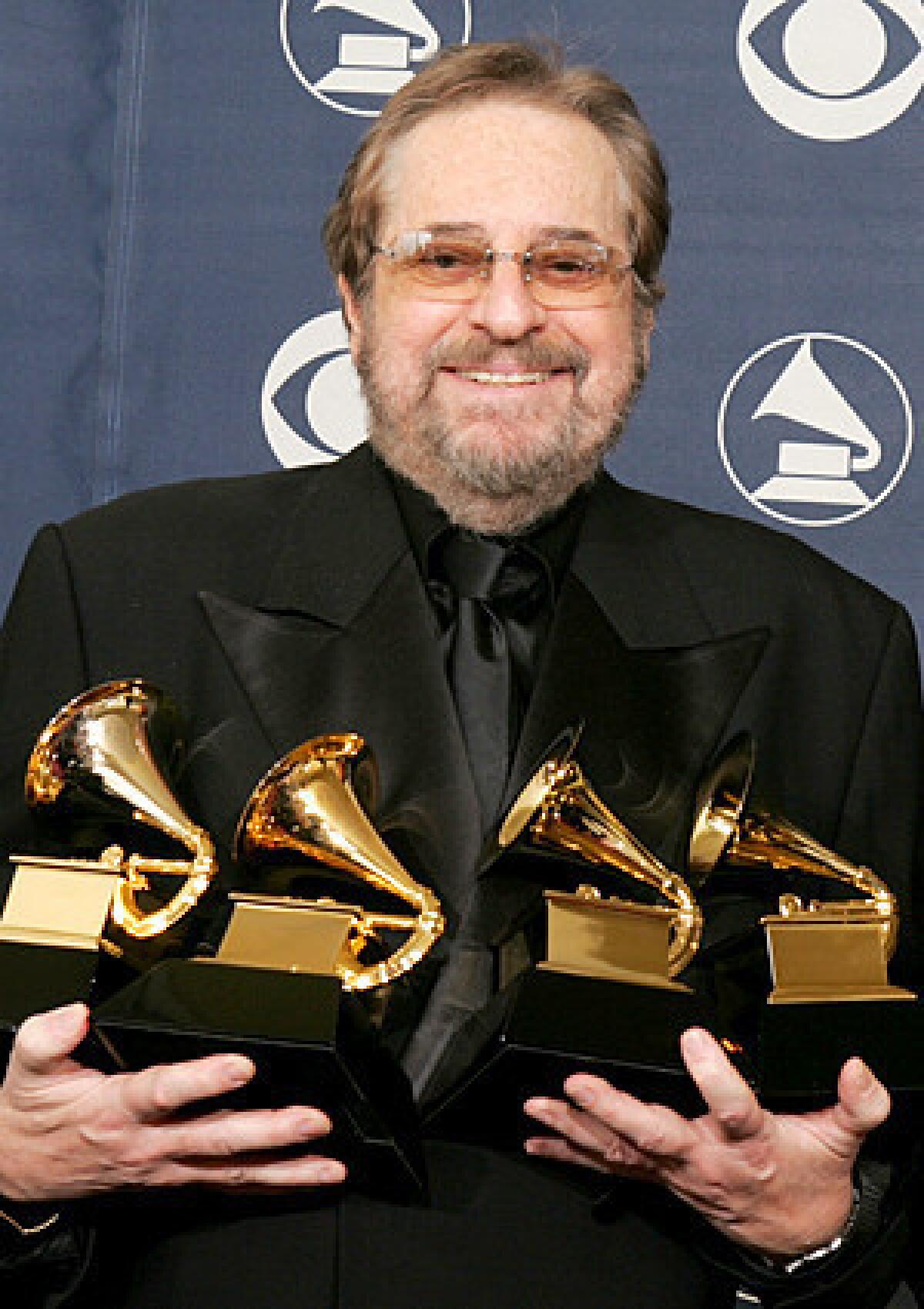An appreciation: Phil Ramone’s golden ear for the hits

- Share via
That Phil Ramone was a musical force in the recording studio is undeniable, and the evidence lies in the range of his accomplishments. For example, within one three-year period in the early 1960s, Ramone mixed Lesley Gore’s smash hit “It’s My Party,” recorded Marilyn Monroe seducing President John F. Kennedy in song on his birthday and engineered essential double-quartet recordings by jazz innovators Ornette Coleman and Eric Dolphy.
Ramone, who died Saturday in his late 70s or early 80s, depending on sources, would have been only around 30 at the time.
The producer, engineer and sound innovator is best known for his work with Paul Simon, Barbra Streisand and Billy Joel, but during more than a half-century behind the soundboard Ramone captured so many big moments that to merely list them is to do a disservice. He didn’t just produce or engineer records. He put to tape cultural touchstones.
PHOTOS: Phil Ramone | 1931 - 2013
“Am I fussy? You bet,” wrote Ramone in his 2007 biography, “Making Records,” and the music world is a better place for it.
The whispered seduction of Stan Getz and Joao Gilberto for their “Getz/Gilberto” album, for example, helped introduce new Brazilian sounds to America. Ramone’s velvet-covered mid-’60s work with Chet Baker in all his crooning glory sound recorded in a glorious cathedral. His work on Paul McCartney’s “Ram” sounds fresh four decades later.
Coltrane. Chicago. Elton John. Ray Charles. Aretha Franklin. Barry Manilow. Liza Minnelli. Harry Nilsson. James Taylor — Ramone worked with them all.
The Starland Vocal Band’s lusty “Afternoon Delight,” Judy Collins’ tear-jerking version of “Send in the Clowns” and Bob Dylan’s epic “Idiot Wind” (and the entirety of “Blood on the Tracks”) were all recorded by Ramone within a year of one another. His hallowed New York recording studio, A&R;, captured for posterity essential music by, among others, Frank Sinatra, the Band and the Mamas and the Papas.
The vibe that connected them all: Ramone’s adoring skill with sonic space. “Without echo, recordings sound tight, lifeless, and dull,” he wrote in “Making Records,” and that aesthetic draped much of his work.
PHOTOS: Notable deaths of 2013
From a critical perspective, the same could be said of many of the artists with whom he worked. Ramone made could-be mainstream, borderline-bland breakouts sound like the center of the universe. When he captured the purely gifted artist with an instrument — be it Joel with his piano on “She’s Always a Woman,” Phil Woods’ alto sax solo on “Just the Way You Are” or John Coltrane’s tenor on “Olé” or Astrud Gilberto’s breathy voice on “The Girl From Ipanema” — it was with adoration. And whether on Paul Simon’s exquisite “Silent Eyes” or Billy Joel’s “Just the Way You Are,” when Ramone recorded the sound of a pianist, the result felt beamed from the heavens, with vocals resonating as though landing in a grand sanctuary.
For all his awards — 14 Grammys among 33 nominations — Ramone was seldom one to tackle the hottest new sound or to gamble on bringing difficult music to the public.
His gift was understanding how to record music that felt balanced enough for parents hitting their mid-40s and the kids coming down off the LSD-addled ‘60s. While the Doors were breaking through to the other side, Ramone was recording Dionne Warwick’s “I’ll Never Fall in Love Again,” more concerned with the power of love than revolution. When Woodstock was transforming culture in ‘69, Ramone was devoted to Burt Bacharach’s album “Make It Easy on Yourself.”
To get a full sense of his life, though, flash back to Kennedy’s White House circa 1962. Seeking to update the East Room house sound system, the president asked Ramone, who had recently made an impression at a Kennedy event in New York City, to address the room’s acoustic deficiencies.
As recalled in “Making Records,” the president and first lady wanted to better present and record a series of music and theater performances. Ramone and his colleagues made the improvements, and then Ramone offered a suggestion: that the president use the East Room for speeches and news conferences as well, so as to better present the messages.
Ramone went one step further, he writes: “Could we get rid of all the unsightly news microphones that were on [Kennedy’s] podium and replace them with a simple, two-microphone system that would feed both the public address system and the press?’” The suggestion was approved, and with one simple idea, the clutter of the president’s podium vanished, and Kennedy was in pure focus.
Ramone didn’t offer that gift to just a president but to every artist he recorded.
PHOTOS AND MORE
COACHELLA: Complete 2013 lineup
THE ENVELOPE: Awards Insider
PHOTOS: Grammy top winners
More to Read
The biggest entertainment stories
Get our big stories about Hollywood, film, television, music, arts, culture and more right in your inbox as soon as they publish.
You may occasionally receive promotional content from the Los Angeles Times.










